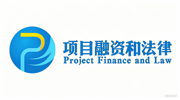Earthquake forces temporary shutdown of Ivanhoe’s Kakula underground mine in DRC

Ivanhoe Mines (TSX: IVN) has temporarily suspended its Kakula underground operations in the Democratic Republic of the Congo due to seismic activity in the eastern part of the mine.
In a press release Tuesday, Ivanhoe said all employees at Kakula — part of the larger Kamoa-Kakula copper complex — were safely brought above ground in line with protocols, and mobile equipment was removed from the mine workings.
No injuries were reported after the evacuation, the company added.
Ivanhoe Mines’ stock sank nearly 9% in the morning session on the news, at C$12.57 a share with a market capitalization of C$17.9 billion ($12.8 billion). The stock traded between C$9.79-C$21.32 over the past 52 weeks.
Ivanhoe said its senior management and geotechnical specialists are currently on site to conduct a “thorough inspection” of the Kakula underground mine.
Initially, results of the inspection showed that seismic activity has significantly reduced in the past 24 hours, and the western section of the Kakula mine has been declared safe for mining operations to resume imminently.
The inspection will continue into the eastern section of the Kakula mine, where underground infrastructure, including pumping, may be impacted, the company noted.
Due to the work stoppage, the Phase 1 and 2 concentrators at Kakula are now operating at a reduced capacity, processing ore from only the surface stockpiles. Ore from the western section of the Kakula mine will also be processed as soon as operations resume, Ivanhoe said.
Meanwhile, activities at the Kamoa underground mine and processing at the adjacent Phase 3 concentrator have not been impacted, it added.
As of April 30, Kamoa-Kakula’s high- and medium-grade ore surface stockpiles totalled approximately 3.8 million tonnes at an estimated, blended average grade of 3.2% copper.
No ‘material impact’ yet
In a note published Tuesday, BMO Capital Markets said the information disclosed by the company does not suggest a “material impact” for now, as the mills continue to operate at reduced capacity from stockpiles, and “the description of damage underground does not appear to be extensive.”
“For context, the recent performance rates for Kakula Phase 1&2 combined stood at the equivalent of 10.5 million tonnes per annum at about 5% copper grade. Kamoa Phase 3 has been running at about 7 million tonnes and 3% copper grade,” BMO analysts wrote.
The Vancouver-headquartered miner recently maintained an annual copper production guidance of 520,000 to 580,000 tonnes in concentrate. Last month, it produced a record 50,176 tonnes from the Kamoa-Kakula copper complex.
Kamoa-Kakula is a joint venture between Ivanhoe (39.6%), Zijin Mining (39.6%), Crystal River Global (0.8%) and the DRC government (20%).






